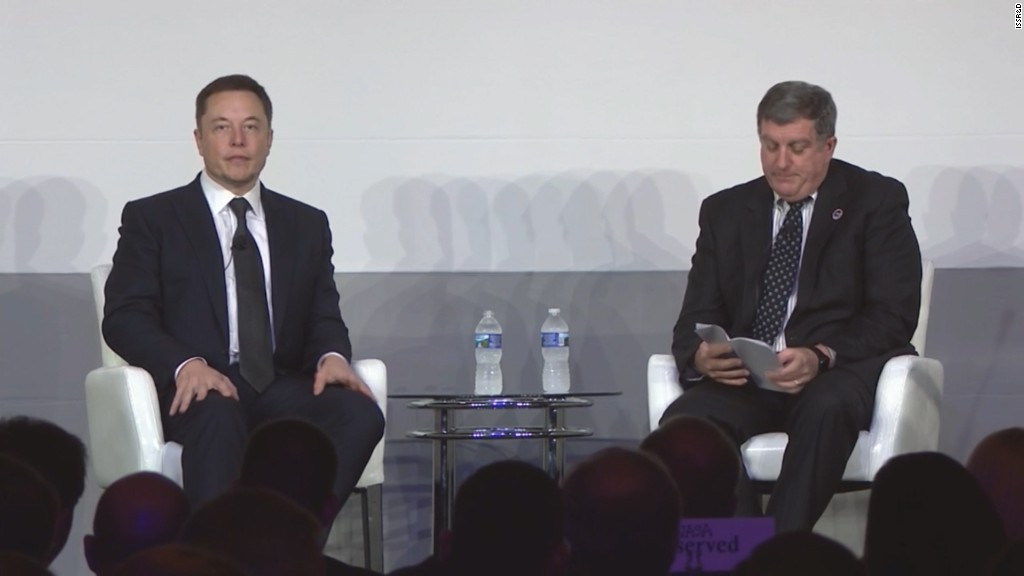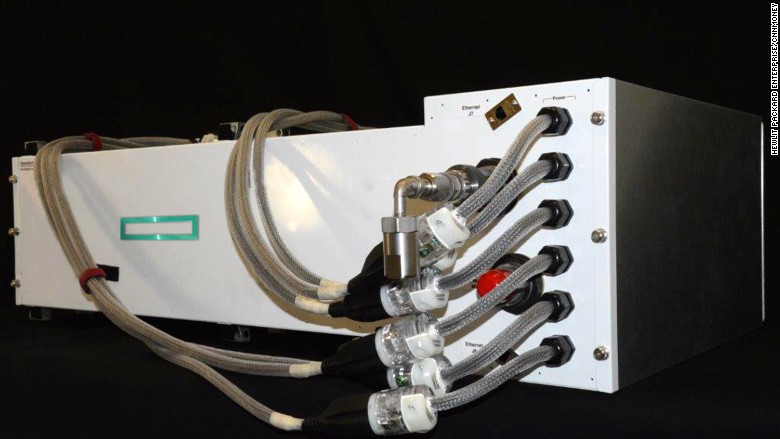
A spacecraft is on its way to deliver one of the most high-tech payloads ever to the International Space Station.
About ten minutes after launching from Kennedy Space Center in Florida on Monday, a Dragon spacecraft separated from SpaceX's Falcon 9 rocket -- beginning its two-day trek through orbital space to the space station.
Cargo missions are always packed with some interesting payloads -- typically several tons of experimental equipment, food and other provisions.
This mission will also deliver something the space station has never seen before: A supercomputer built by Hewlett Packard Enterprise, (HPE) dubbed the "Spaceborne Computer."
If it works, it could be the most powerful commercial computer ever to operate in space.
Astronauts aboard the space station already have a bunch of devices you'd find at your local electronics store -- including HP laptops.
Related: SpaceX now valued at $21 billion
But a supercomputer is something different. It's a much more powerful piece of hardware that can crunch massive amounts of data and send the results to other computers in just moments.
According to Mark Fernandez, the HPE engineer who is heading up this new experiment, the space-bound supercomputer will have the ability to make one trillion calculations in a single second -- about 30 to 100 times more powerful than your average desktop computer.
Julie Robinson, the chief scientist for NASA's space station program, said that if this supercomputer can function in the harsh conditions of space, it will be very exciting news for companies down here on earth.
Robinson points out that a huge point of interest for the private sector is taking high-quality satellite images of earth in order to track things like crop growth or oil exploration.

"What's happening is -- just as your TV now has so much more resolution -- the same thing is happening with [satellite imagery]," she said.
But the high-definition images require 200 to 300 times more data, which can clog up the communication pipeline between earth and space. That's where a supercomputer on board the space station would become hugely valuable, Robinson told CNNMoney.
"If you can process the data on board [the space station], you then only need to send down a subset of the data that's actually needed," she said.
Related: SpaceX rocket finally lifts off after two aborted launch attempts
Will the supercomputer work?
Astronauts on board the space station can begin collecting the payload when the spacecraft docks on August 16.
Fernandez said HPE has volunteered to have its payload removed last, so it'll be a few days into September by the time the supercomputer makes its way onto the space station and is plugged in.
"If it powers up, that's going to be my first relief. I will be very excited then," Fernandez told CNNMoney.
Related: SpaceX's plan is to make history, then make more history
The mission that kicked off Monday marks the 12th unmanned resupply mission that SpaceX has conducted for NASA since 2012.
When NASA retired its Space Shuttle program in 2011, the space agency turned to the private sector to begin making these cargo trips.
SpaceX -- the upstart exploration company headed by Tesla's (TSLA) Elon Musk -- was one of only a couple of companies that have been able to step in and take up the job.
Without those companies, NASA would likely have had to rely on some Russian launches to ferry cargo to the space station.
That's already a problem when it comes to manned missions.
Currently, there are six astronauts on board the space station -- three from the U.S., one from the European Space Agency, and two from Russia. And all of them were brought to the space station by Russian spacecrafts.
After the Shuttle program retired, the U.S. no longer had a spacecraft that was certified to carry humans.
Both SpaceX and its private sector competitor Boeing (BA) are hoping to change that soon. They're currently working on crew-grade spacecrafts that NASA hopes to begin using in the near future.

